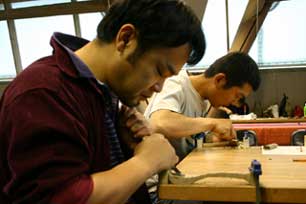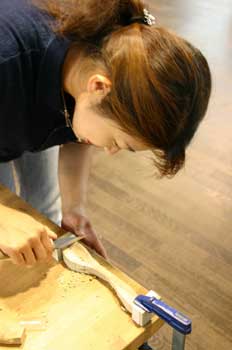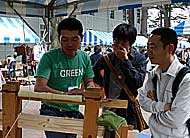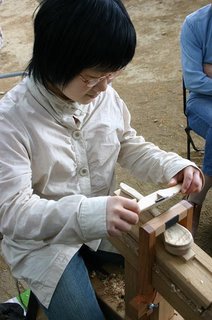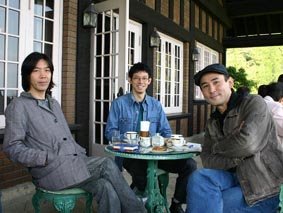Shinsuke studied green wood chair making in Britain.
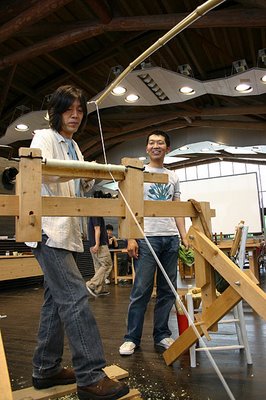
There used to be pole lathes in Japan, mainly for turning bowls and plates. In Western countries they use it for shaping long pieces like chair legs as well as bowls.
The great advantage of these tools is that you can start woodworking without a huge investment. It is safe and fun as well. Green wood is so soft to turn on the man-powered lathe that even children can enjoy without a risk of injury.
I am planning to introduce these tools to the craft and furniture making course in the Academy, and the first pole lathe is now under construction. It will be used for various activities at the Academy.
Thanks to Shisuke for showing great tools to us!

先日の生涯教育講座でスプーンづくりを実施した際、参加者のお一人の加藤慎輔さんにちょっと変わった道具を持ってきていただきました。足踏み旋盤(pole lathe)と削り馬(shaving horse)です。これらは欧米で、電気を使わずに生木を加工する木工、グリーンウッドワーキング(green woodworking)に使われる道具です。
加藤さんは、イギリスでこの道具を使った椅子づくりを学んでこられました。

足踏み式の木工旋盤(ろくろ)は、日本でもおもにお皿やお椀を挽くのに使われていました。欧米では椅子の脚など丸い棒を挽くのに使われることが多いようです。
これらの道具の利点は、設備投資にお金がかからないことと、安全で誰にでもできること。そして何より楽しいこと。伐ったばかりの木はやわらかいので、足踏み式でも簡単に削れます。木工というと危険がつきものですが、これなら子供でも楽しめます。
このグリーンウッドワーキングをアカデミーでも取り入れたいと考えていて、現在、第1号機を制作中です。完成後は実習やイベントなど、さまざまな機会に利用していくつもりですので、またこの場でも報告したいと思います。
遠方から道具を持ってきていただいた加藤さん、ありがとうございました!




